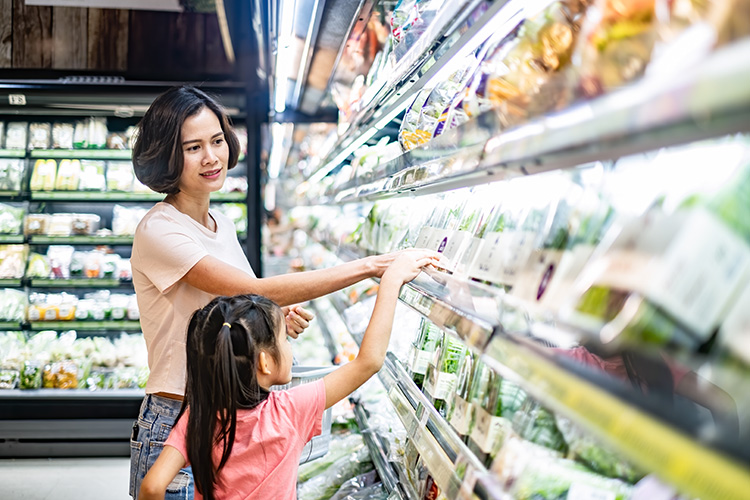
Ensure your child’s diet is safe without compromising nutrition. Clinical dietitian Ong Jia Xin from Mount Alvernia Hospital explains how.
Children with food allergies are potentially at risk of inadequate nutrition and poor growth, especially those who are allergic to milk protein, have multiple food allergies, or suffer from moderate to severe eczema.
Parents may eliminate multiple foods from the child’s diet, which may lead to insufficient nutrient intake.
However, with the right guidance from a dietitian, there is no need to compromise your child’s nutrition needs, says Clinical Dietitian Ong Jia Xin.
“Dietitians play a central role in the management of childhood food allergies. An allergy dietitian can suggest appropriate and safe food substitutes to ensure your child maintains a well-balanced and nutritious diet to support his/her growth,” she explains.
The dietitian will also ensure that parents are equipped with adequate knowledge and know how to read food labels, and teach them strategies to prevent cross-contamination.
Ms Ong herself has more than eight years of experience in developing tailored nutrition plans for children with various conditions, in particular, allergies.
Common food allergies in children
The most common childhood food allergies in Singapore are allergies to eggs, cow’s milk, peanuts, shellfish, wheat, soy and fish.
These food allergies affect up to five per cent of children in Singapore and are usually diagnosed before the child turns two.
How to tell if your child has a food allergy
You may not know if your child is allergic until there are symptoms. There are two types of food allergic reactions:
Parents and caregivers who suspect that their child has a food allergy should see an allergist, who will make a diagnosis based on the child’s history, as well as a skin prick test and/or allergen-specific immunoglobulin E test.
Managing your child’s food allergy
The best way is to avoid the trigger foods. However, doing so may be trickier than expected as food allergens may be present in store-bought and packaged products, as well as in meals when eating out.
For some children, even inhalation of the food allergen may trigger an allergic reaction. It is highly important that parents and caregivers be aware of what the trigger foods are and how to avoid them.
To ensure your child’s nutrition remains well-balanced while accommodating food allergies, offer a diverse range of foods from the essential food groups.
Wholegrain carbohydrates & alternatives
Wholemeal bread, brown rice, wholegrain noodles, beehoon or pasta, wholemeal biscuits, chapatti, oats, wholegrain breakfast cereal.
Fruits
A varied selection including apple, orange, pear, papaya, watermelon, pineapple, grapes, banana, strawberries, blueberries, etc.
Vegetables
A varied selection including green leafy vegetables, broccoli, cauliflower, pumpkin, carrot, etc.
Meat, fish & alternatives
Meat, fish, beancurd, pulses, prawns, eggs, etc.
Dairy & alternatives
Milk, yoghurt, cheese, calcium-fortified plant-based milk (soy milk, oat milk, etc).
This ensures your child receives a comprehensive range of vital nutrients necessary for growth and development.
5 tips to manage your child’s food allergies
1. Be aware
Consult your dietitian to get your child officially diagnosed and certify what are the common foods in your child’s and family’s diet containing the food allergen(s).
2. Prevent cross-contact
This happens when one food allergen comes into contact with another food not intended to contain that food allergen. It can transferred via hands, kitchen cutlery and utensils, food preparation surfaces, deep fryer and reused cooking oils. Minimise cross-contact by thoroughly cleaning utensils and surfaces, and using separate cooking equipment for different food.
3. Read food labels
Always read food labels and ingredient lists carefully before purchasing or consuming the food, even if your child has tolerated the food previously. This is because recipes for food products may change.
4. Communicate
Tell everyone involved in your child’s care including family members and the child’s school about the allergy and what to do.
5. Have an action plan
List out the steps to take should your child accidentally consume the food allergen. Always carry your child’s medication, such as antihistamines or adrenaline autoinjector, with you.
Article contributed by Ong Jia Xin, accredited dietitian from Mount Alvernia Hospital.
Our dietitians at Mount Alvernia Hospital provide dietary consultations for toddlers and growing children. Get in touch with the Nutrition & Dietetics Department at 6347 6702 or email dietetics@mtalverniasg to find out more!
This article is taken from our MyAlvernia Magazine Issue #51. Click here to read the issue on our website.